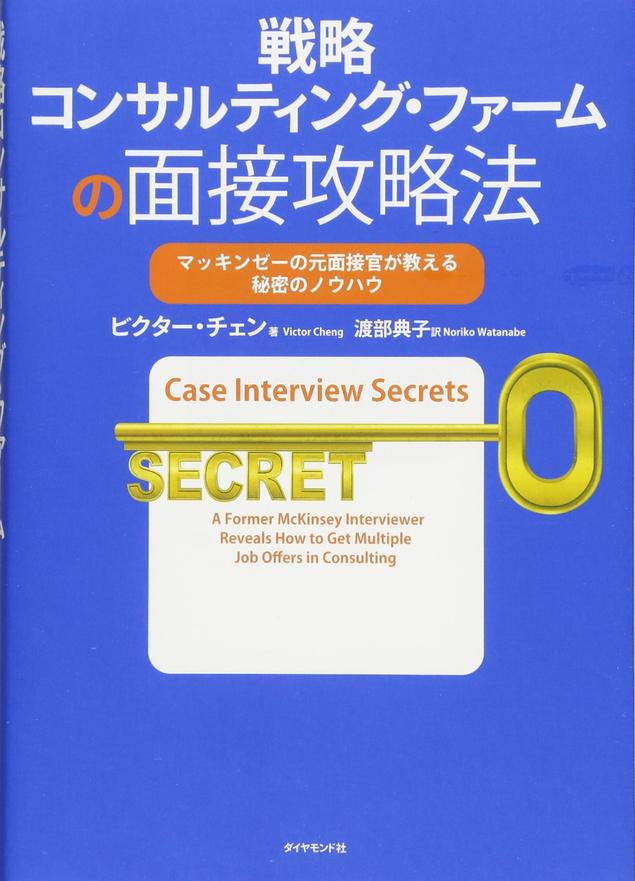Strategic consulting and firm interview 7 evaluation method guide
The Strategic Consulting Farm uses the term "case interview" as a term that refers to how to solve the problem solving of the aspires.Each farm has created a number of different formats as the traditional case interview format has been fixed and modified.The main strategic consulting firms are currently evaluating applicants in the following seven evaluation methods.This time, we will introduce seven evaluation methods from the new book "Strategic Consulting Farm Interview Strategy" (translation: Noriko Watanabe).
What are seven evaluation methods?
(1) Numerical processing tests (2) estimated questions (3) active case interview (4) Passive case interview (5) descriptive case interview (6) group case interview (7) presentation formatCase interview
(1) and (2) are looking at numerical abilities, and (3) to (7) evaluates the qualities of the applicant as a consultant in a case interview using fictitious settings.
Numerical ability evaluation is not exactly a case interview, but here we will consider together for the following two reasons.
First, a test for numerical ability evaluation is often given in the form of a mini case.Second, interviewers may test the number of aspiring people during the case interview in fictitious settings.The strategic consulting firm will be familiar with both, as the strategic consulting firm will be asked while entangled with these two evaluation methods.
What will be introduced in the future is an overview of various case interviews.Details of each type of deals will be explained in Chapter 3 and later, but by reading the following outline, you will be able to roughly grasp what the interviewer is looking for.
Numerical ability evaluation that terrestrial force is tested
(1) Numerical processing test
The numerical processing test includes a problem of testing simple mathematics, data analysis, and quantitative logical thinking.For example, in a simple mathematics, four arithmetic calculations and ratio calculations are given, and data analysis makes a problem with the drawing and graphs, and drawing conclusions.

According to the question of testing quantitative logical thinking, "If Chart A is correct, the sales of product A will increase by 10 % and product B will decrease by 15 %. In this case, the client is now now.Is the decision to be considered correct?
McKinsey first adopted this type of problem in the major strategic consulting firm.This is called "McKinsey PST" (PST is an abbreviation of "Problem Solving Test"), and describes the details in Chapter 2 of this book.
In the numerical processing test represented by McKinsey PST, aspirations require many calculations in a limited amount of time, the applicants practice the basic calculations "fast" and "accurately".There is a need.We created a calculation drill for case interview measures so that readers can easily enhance these skills (www).CaseInterView.Available for free on COM.However, English).
In this drill, you measure the time to solve the problem and compare it with the time required of other applicants, and you are the top (the top 25 %, 50 % or less, 75 % or less, etc.) You can know if it is located.
(2) Estimation problem
The estimated question is a method of testing the basic calculation ability of the aspiring person and the ability to assume to simplify the complex quantitative data (translation: In Japan, it is generally known as "Fermi estimation".Type problem format).
According to the estimated question, the applicant requires that the number of only paper and pen is estimated without using actual survey materials or Google search.Usually, problems that estimate a specific market size are often issued.Here are some examples of estimated questions.
● What gallon gasoline is refueled every week at general gas stations?
● Assuming that Motorola has developed a new product called a mobile phone in 1980.The sales of this new product for the first three years are disastrous.After this, as the production cost and selling price of the mobile phone decrease, it should be estimated with the basis of the number of sales in 1985.
● How long does it take when moving a mountain of average size 10 miles (about 16 km) with a dump truck with average size?
You may be wondering if these strange problems are really given.It's not surprising that I think so, but I myself have been asked by the interviewers.There is no doubt that you will be asked the same question.
Remember that only paper and pen can be used in this problem.You cannot use the Internet, Google search, or calculator.More troublesome, the interviewer wants you to answer the question in about 5-7 minutes.Considering the constraints imposed, it is impossible to give an "accurate" answer to these issues.However, it is possible to "estimate" the answer by placing some assumptions to simplify and calculating correctly based on the assumptions.
The purpose of an interviewer is to evaluate what kind of thinking process you answer, how much your answer is (close to the actual number),It's not a big problem.
You may think that the strategic consulting firm is making this kind of strange problem to afflict the applicants.I also felt so at first.However, as soon as I started working in McKinsey, I realized that the client always asked a consultant to ask similar questions.If you complain to someone to endure this kind of challenge in the recruitment process, the other person is a client company.